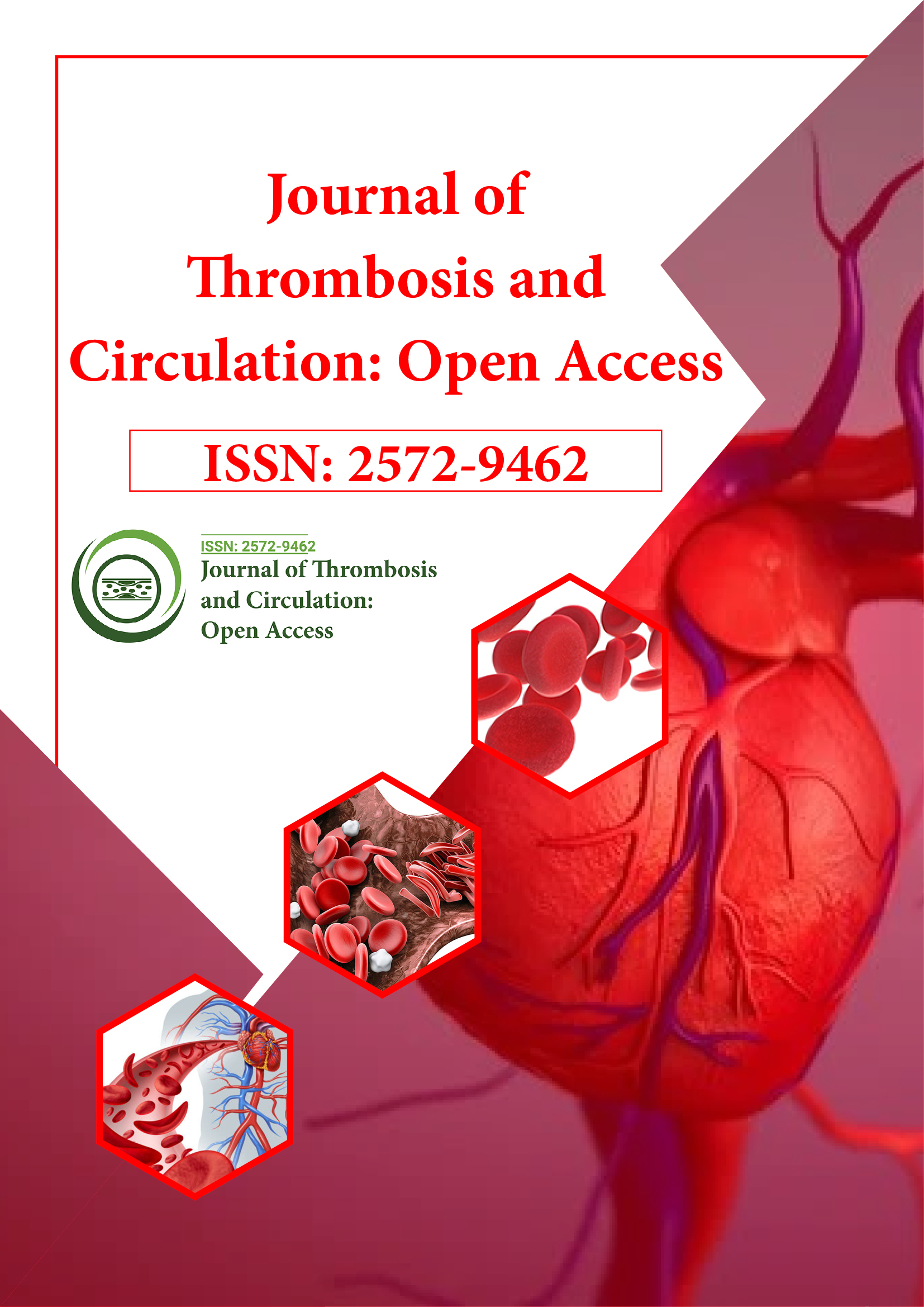Indexed In
- RefSeek
- Hamdard University
- EBSCO A-Z
- Publons
- Google Scholar
Useful Links
Share This Page
Journal Flyer

Open Access Journals
- Agri and Aquaculture
- Biochemistry
- Bioinformatics & Systems Biology
- Business & Management
- Chemistry
- Clinical Sciences
- Engineering
- Food & Nutrition
- General Science
- Genetics & Molecular Biology
- Immunology & Microbiology
- Medical Sciences
- Neuroscience & Psychology
- Nursing & Health Care
- Pharmaceutical Sciences
Perspective - (2023) Volume 9, Issue 5
Atherosclerosis Awareness: Implications for Venous Thromboembolism Prevention
Arenas Faye*Received: 18-Aug-2023, Manuscript No. JTCOA-23-23287; Editor assigned: 21-Aug-2023, Pre QC No. JTCOA-23-23287 (PQ); Reviewed: 06-Sep-2023, QC No. JTCOA-23-23287; Revised: 13-Sep-2023, Manuscript No. JTCOA-23-23287 (R); Published: 21-Sep-2023, DOI: 10.35248/2572-9462.23.9.246
Description
Venous Thromboembolism (VTE) is a medical condition characterized by the formation of blood clots within veins, which can potentially have life-threatening consequences if not detected and treated promptly. While VTE has traditionally been associated with arterial diseases like atherosclerosis, recent research has focused on the intriguing link between VTE and the Atherosclerosis Risk in Communities (ARIC) study, uncovering important insights into the risk factors, prevention, and management of both conditions. In this article, we explore the connection between venous thromboembolism and atherosclerosis risk as well as the implications for patient care.
Venous Thromboembolism (VTE) encompasses two major conditions: Deep Vein Thrombosis (DVT) and Pulmonary Embolism (PE). DVT occurs when blood clots form in deep veins, usually in the legs, while PE develops when these clots break loose, travel to the lungs, and block pulmonary arteries. VTE is a significant health concern and can lead to severe morbidity and mortality if not appropriately managed.
Atherosclerosis is a chronic inflammatory disease characterized by the buildup of plaque inside arteries. This plaque consists of cholesterol, fat, and other substances, leading to the narrowing and hardening of arteries. Atherosclerosis is a major contributor to heart disease, stroke, and peripheral vascular disease.
The link between venous thromboembolism and atherosclerosis
Recent studies, including the Atherosclerosis Risk in Communities (ARIC) study, have revealed an intriguing association between VTE and atherosclerosis risk factors. Here are some key findings:
Shared risk factors: Both VTE and atherosclerosis share several common risk factors, such as obesity, smoking, diabetes, and high blood pressure. These risk factors contribute to systemic inflammation and endothelial dysfunction, increasing the likelihood of blood clot formation.
Inflammation: Chronic inflammation plays a crucial role in both VTE and atherosclerosis. Inflammatory cytokines and immune responses can trigger clot formation in veins and promote plaque buildup in arteries.
Endothelial dysfunction: Endothelial cells line blood vessels and are responsible for regulating blood flow. Dysfunction in these cells, as seen in atherosclerosis, can also increase the risk of VTE by disrupting the normal anticoagulant properties of the endothelium.
Implications for Patient Care
The connection between VTE and atherosclerosis risk has several implications for patient care:
Holistic risk assessment: Healthcare providers should consider the interplay between VTE and atherosclerosis risk factors when assessing a patient's overall cardiovascular risk. A comprehensive evaluation can help identify individuals at higher risk for both conditions.
Lifestyle modifications: Encouraging patients to adopt a hearthealthy lifestyle is crucial for reducing their risk of both VTE and atherosclerosis. Promoting regular exercise, a balanced diet, smoking cessation, and weight management can mitigate common risk factors.
Anticoagulation therapy: In some cases, individuals with atherosclerosis may benefit from anticoagulation therapy to reduce the risk of VTE. This decision should be made on a caseby- case basis, taking into account the patient's overall cardiovascular risk profile.
Patient education: Educating patients about the connection between VTE and atherosclerosis can empower them to make informed decisions about their health. Increased awareness may lead to improved adherence to preventive measures and treatment plans.
The emerging link between venous thromboembolism and atherosclerosis risk highlights the complexity of cardiovascular diseases and the importance of a comprehensive approach to patient care. By recognizing the shared risk factors, inflammatory pathways, and endothelial dysfunction that contribute to both conditions, healthcare providers can better change prevention and treatment strategies. Ultimately, this knowledge may lead to more effective interventions and improved outcomes for patients at risk for VTE and atherosclerosis.
Citation: Faye A (2023) Atherosclerosis Awareness: Implications for Venous Thromboembolism Prevention. J Thrombo Cir. 9:246.
Copyright: © 2023 Faye A. This is an open-access article distributed under the terms of the Creative Commons Attribution License, which permits unrestricted use, distribution, and reproduction in any medium, provided the original author and source are credited.
